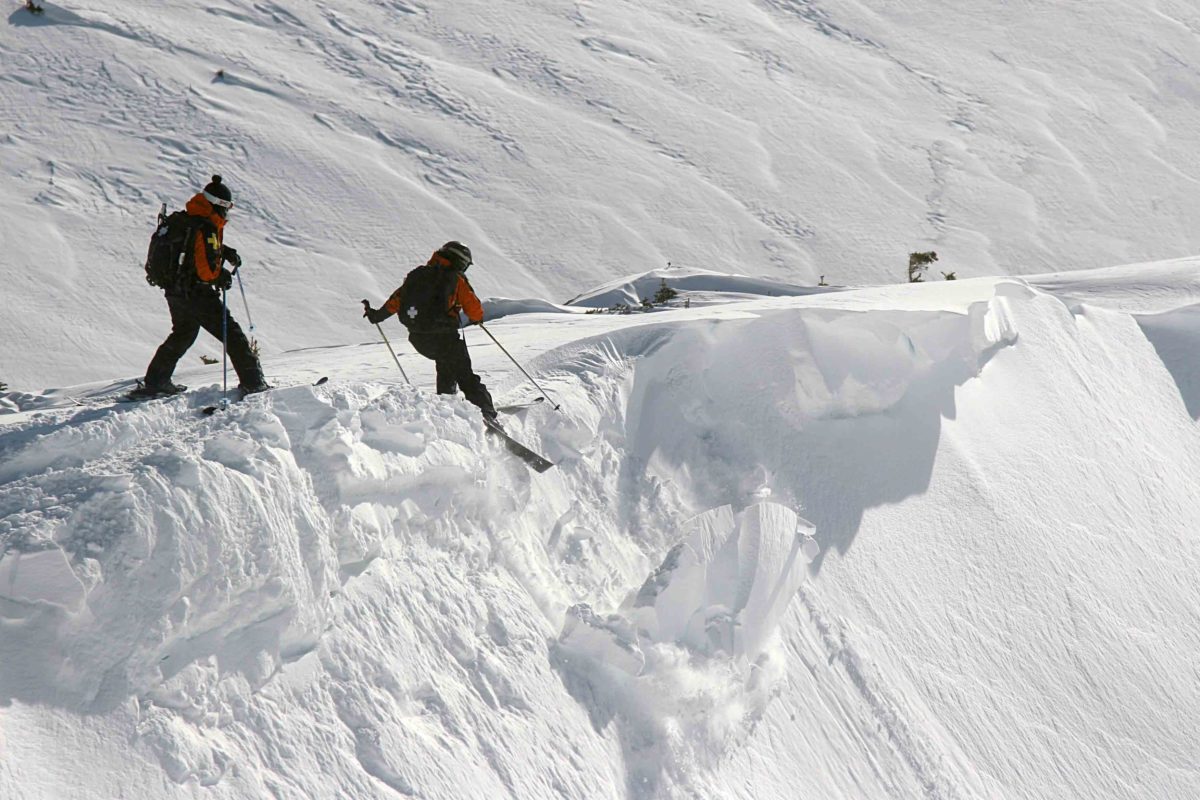An advanced technique in which a piece of cornice is dropped onto a slope to test for instabilities in the upper snowpack.
Messing with cornices is an advanced technique and it can be a dangerous endeavor; every year there are near misses and accidents involving cornices. Cornices often break further back than expected, and if you get caught with a falling cornice, you might subsequently get tangled up in an avalanche. Also, you certainly don’t want to trigger an avalanche onto unsuspecting people below. For these reasons, use a healthy dose of caution with cornice tests. That said, cautious and well-executed cornice drops onto a slope may provide useful feedback for instabilities in the upper snowpack. Look for small and manageable pieces of cornice, about the size of a dishwasher, to knock onto the slope. Double and triple-check to make sure no one is below you. It is always advisable to use a roped belay to prevent you from falling onto the slope below if the cornice breaks further back than you expect. Dropping cornices onto smaller, less consequential slopes will give you an extra safety buffer. Rolling a dishwasher-sized cornice down the slope is a good test for storm instabilities or fresh wind loading, but it is not a reliable test for deeper weak layers.


